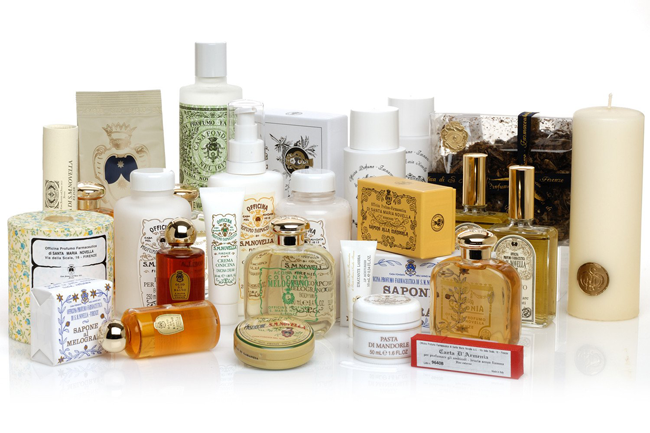The importance of creativity and distinctiveness

The importance of creativity and distinctiveness.
The “Santa Maria Novella” cases.
With the decisions issued on October 2017, the China Trade Mark Office (“CTMO”) accepted the oppositions filed in the name of Officina Profumo Farmaceutica di Santa Maria Novella S.P.A. (herein “SM Novella”) against two trademark applications for “‘SANTA MARIA NOVELLA & Device”.
The CTMO stated that “in accordance with Articles 7, 30 and 35 of the Trademark law, our Office hereby makes the decision that the Opposed Trademark No. 16441775 and 16441775 for ‘SANTA MARIA NOVELLA & Device’ shall be rejected for registration”.
The attempt to register the trademark by a possible squatter was then stopped thanks the prompt reaction of the trademark owner and favorable decisions from the CTMO.
The judgment standard applied in these remarkable decisions are in line with most updated international standard in trademark evaluation and leave only as bad memory the protectionist decisions that made CTMO ingloriously famous. This is anyway new trend at CTMO that still struggle to affirm itself, and not yet an established practice.

SM Novella is a historical Italian company which is working from over 400 years in the cosmetics sector, producing perfume and others various bath products. The homonymous brand has been used worldwide including in China being anyway is a niche product rather than a mass market and large consumption item.
The trademark Applicant, an individual named CAI Zhifeng, applied two different requests for his trademark on the date of August 30th 2017. The first application designated the goods of “bath lotion, fumigation preparation (perfumes) and cosmetics, etc.” in Class 3. The second one was designated the service of “advertising, publicity, provide commercial information by website, import-export agencies, etc.” in class 35.
SM Novella, thanks to a careful monitoring of Internal trademark registers found out on time the malicious attempt for registration and intervened promptly buy filing Opposition. The two decisions of the CTMO are both favorable to the Italian company.

As for the first application, the Office recognized, first of all, that the prior registered trademark No. 11022226 “SANTA MARIA NOVELLA & Device” was already approved to be used on goods of “bath lotion, fumigation preparation (perfumes) and cosmetics, etc.” in Class 3.
According to the Office both parties’ trademarks were identical or similar in terms of letter combination, device elements and overall appearance. Moreover, as the Office affirmed, the designed goods of the both parties’ trademarks were basically identical or similar in terms of function and use, which were similar goods. Thus, the co-existence of similar trademarks used on similar goods was able to confuse the consumers.
The CTMO moreover declared that the Opposer Trademark had proved the stronger creativity and distinctiveness and, by the way, that the Trademark Applicant did not offer reasonable explanation for the creativity of the Opposed Trademark. In the decision the Office observed the higher popularity among relevant consumers after the use and wide publicity for a long time. Therefore, the CTMO deemed that the Trademark application of CAI Zhifeng was filed with improper manner and violated the principle of good faith abided by the civil activities.

The question that we shall reply is “why the CTMO preliminary approved a trademark that is identical to another trademark in the same class”?
The reason is that the prior trademark covers partially class 3 and the applicant of the latter trademark was preliminary approved for goods that according to the Chinese classification/sub-classification system are different from those included in the previous trademark. Therefore, it is only after the owner of the prior trademark proved an actual interest to its trademark that CTMO took in consideration an intra-class extension of protection, accepted the opposition and rejected from registration the malicious application.
As the second application of the Opposed Trademark, which was designated on the service of “advertising, publicity, provide commercial information by website, import-export agencies, etc.” in class 35, the China Trademark Office reaffirmed the higher popularity of the Opposer Trademark.
Firstly, the CTMO recognized that the designed goods or services of the both parties’ trademarks were different in term of functions and use, service content, and service mode, which were not similar good or service.
On the other hand, the CTMO admitted that the Opposer Trademark enjoying strong creativity and distinctiveness and, because of lacking evidence, according to the Office the Trademark Applicant did not offer the justification of the creativity of his trademark, which is almost identical with the Italian one.
The Office believed that also in this case the Trademark Applicant filed the registration of the Opposed Trademark with improper manner and violated the principle of good faith, which is moreover settled on the Article 7 of Trademark Law.
So based on the above, the CTMO made the decisions to reject the registration of the two opposed trademarks Nos. 16441774 for “SANTA MARIA NOVELLA & Device” in Class 35 and 16441775 for “SANTA MARIA NOVELLA & Device” in Class 3.
These decisions constitute a very important precedent for the trademarks subject.
Indeed, in addition to the prior registration, which is a factual data, the China Trademark Office has recognized the prior reputation and high distinctiveness of the Italian trademark in China even though their products haven’t been largely sold in the PRC.
Paola Stefanelli, IP lawyer at Bugnion Spa that assists SANTA MARIA NOVELLA from several years comments that prompt reaction and bold attitude are the key to success in such kind of cases.
HFG represented Santa Maria Novella in front of CTMO.


